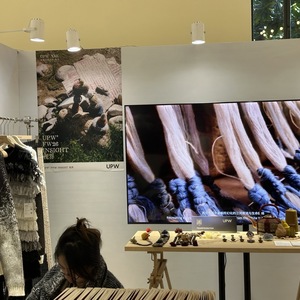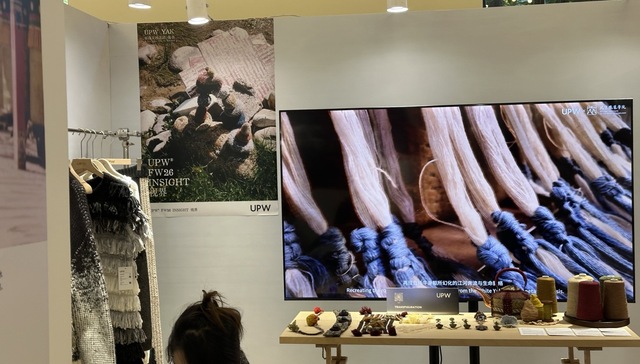by ZHOU Fangying
At this year's Shanghai Fashion Week, LIN Jian—who has organized apparel trade shows for more than a decade—launched a new trade fair called Fab Fabs, short for "Fabulous Fabrics." The goal, he told Jiemian News, was to deepen collaboration between designers and textile suppliers by highlighting practical yet trend-driven innovations that merge materials with design.
As China's apparel industry grapples with slower growth, upstream suppliers are seeking differentiation of their own. Many are shifting from serving brands to building consumer-facing identities—turning fabric technology into storytelling.
One international model is GORE-TEX, the U.S. brand that built a global reputation around its patented waterproof and breathable membrane. A GORE-TEX tag can lift a jacket's retail price by hundreds of yuan, and its collaborations with outdoor labels such as Arc'teryx and The North Face have made it one of the most recognized material brands worldwide.
Chinese newcomers are now taking cues from that playbook. Among them is MILEVENT, a fabric developer founded in 2025 that says it has patented its own membrane technology. The company told Jiemian News that it aims to combine functionality and aesthetics under the concept of "fashion functionality," creating fabrics that not only perform but also look and feel refined.

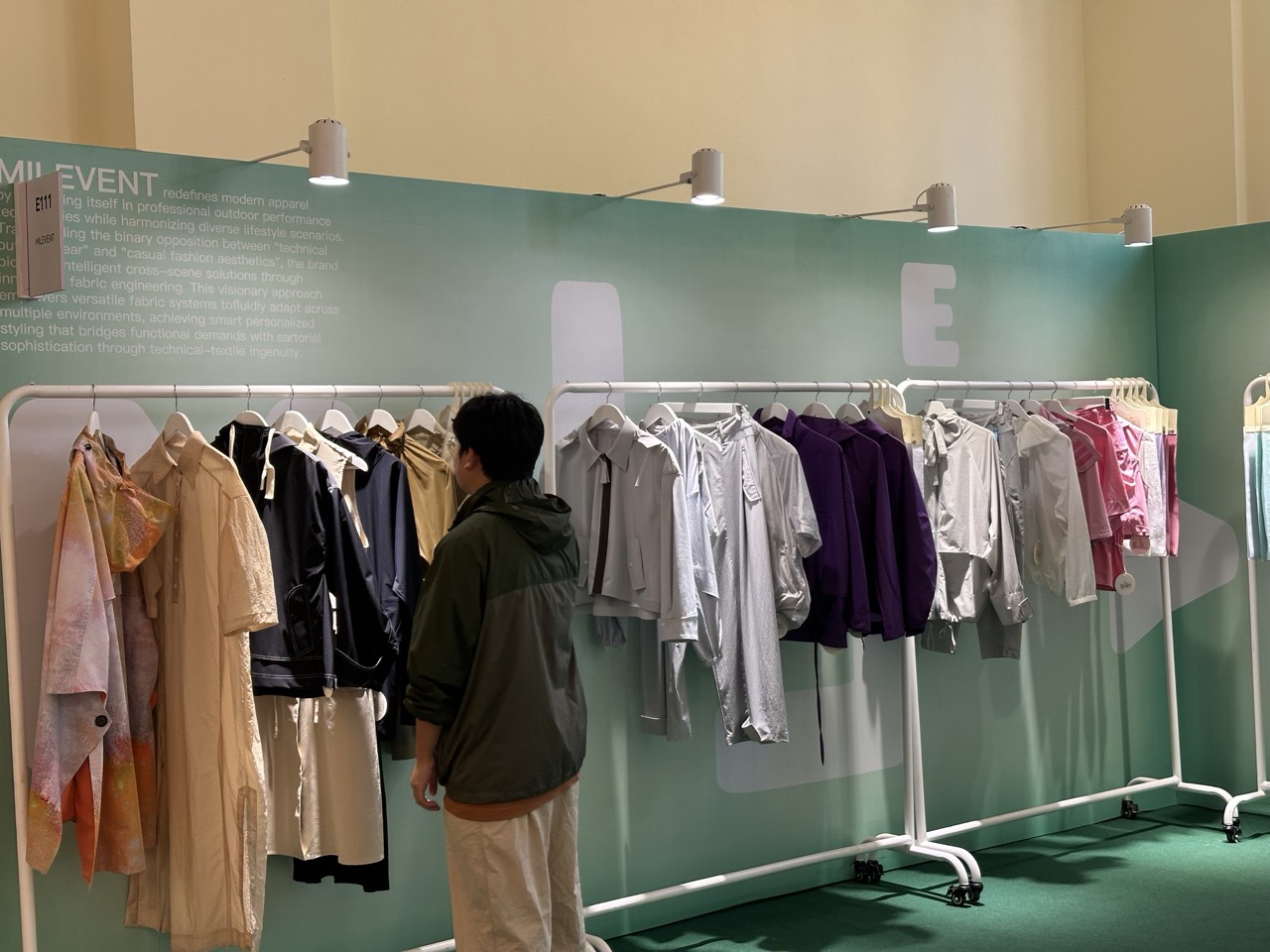
Photo by Zhou Fangying
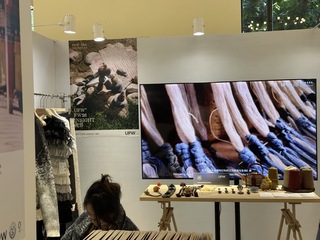
At Fab Fabs, MILEVENT showcased not just fabric swatches but complete garments designed to demonstrate how functionality can meet fashion. Its founders said the brand was responding to a common issue in the market: "Many technical outdoor fabrics still feel stiff and overly rugged—they look 'too technical' and 'too masculine,'" the team told Jiemian News. MILEVENT now works in reverse—starting from fashion design to rethink texture, color, and touch at the material-development stage.
Other textile suppliers without proprietary patents are finding their own ways to stand out through storytelling and sensory experience. UPW, a Hong Kong-based yarn producer with a 30-year history, has focused on branding through sustainability and creative collaborations.

Photo by Zhou Fangying
"We're the world's largest supplier of coarse yarns for knitwear," said vice general manager Vincent Chu in an interview with Jiemian News. After entering mainland China a decade ago, UPW began cultivating consumer awareness—opening a Xiaohongshu account, hosting design competitions with universities, and setting up a booth at Shanghai Fashion Week.
UPW now sells small-quantity yarn packs to individuals online, and its social media following has topped 26,000. "It's not a profit driver," Chu said. "But the designer community engagement has been great." The company also uses videos, samples, and garments to narrate the story behind its signature yak wool collection—from origin to finished yarns. QR-coded hangtags allow customers to trace the origin and verify authenticity, turning an invisible material into a tangible narrative.
Guangdong-based Prosperity Textile has followed a similar path. Its marketing director, ZHONG Zhangwei, told Jiemian News that the firm co-brands hangtags with apparel partners so shoppers can "see clearly that the jeans are made with our denim." Some labels even include data on sustainable production and water-saving processes.
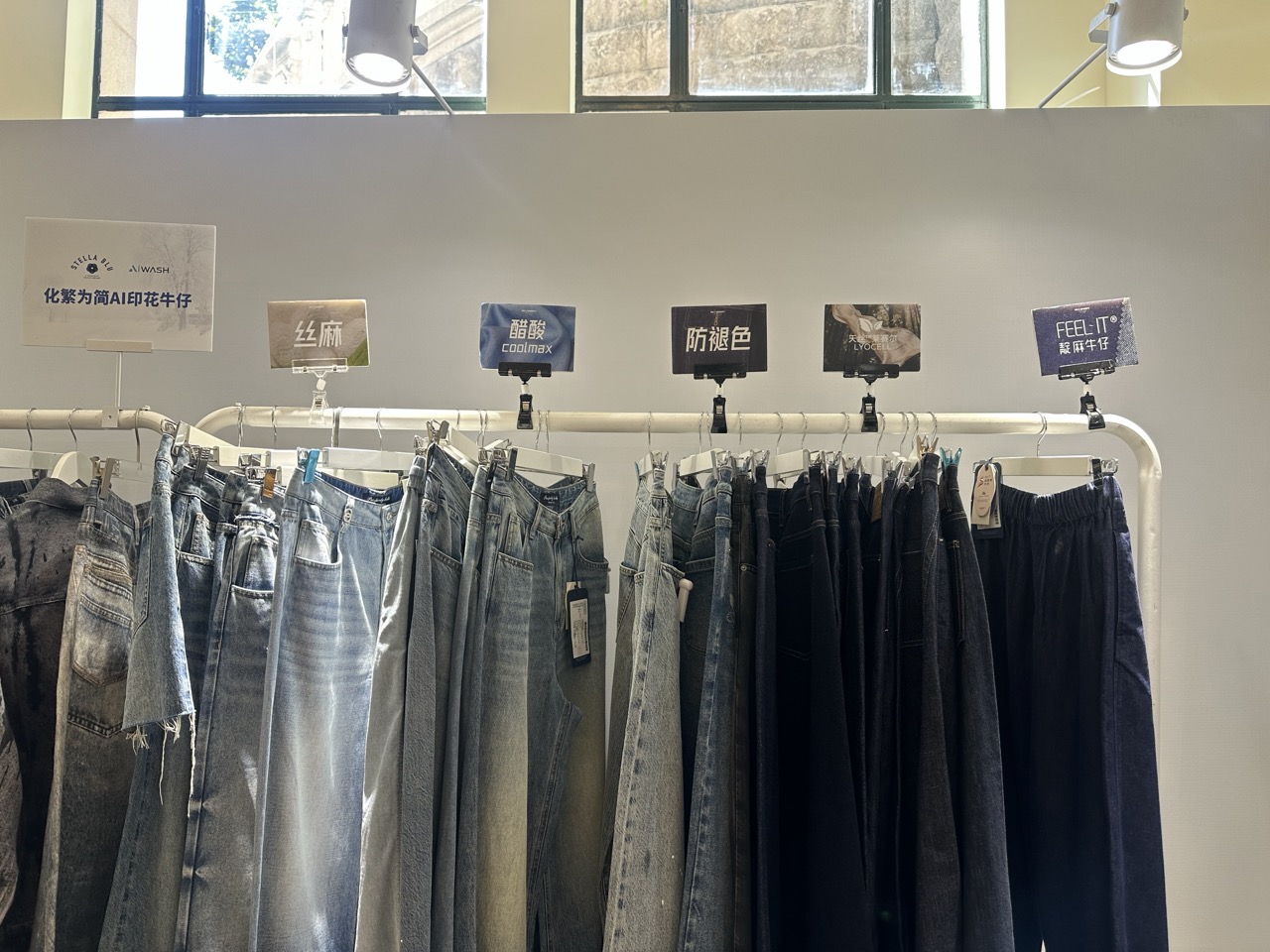

Photo by Zhou Fangying
Prosperity Textile has also created named subseries such as "CoFlex" and "FEEL~IT," each with distinctive visuals and texture stories. Internally, the company calls this "series IP-ization"—treating each textile line like a mini brand. "It helps designers and consumers remember what they're touching," Zhong said.
Designers, in turn, amplify these materials through their creative use. "When designers adopt a material first, the market soon follows," said Lin Jian. Many of this season's exhibitors, he added, offered small-batch production and ready stock to meet designers' fast-turn needs—allowing new fabrics to reach runways before mass production.
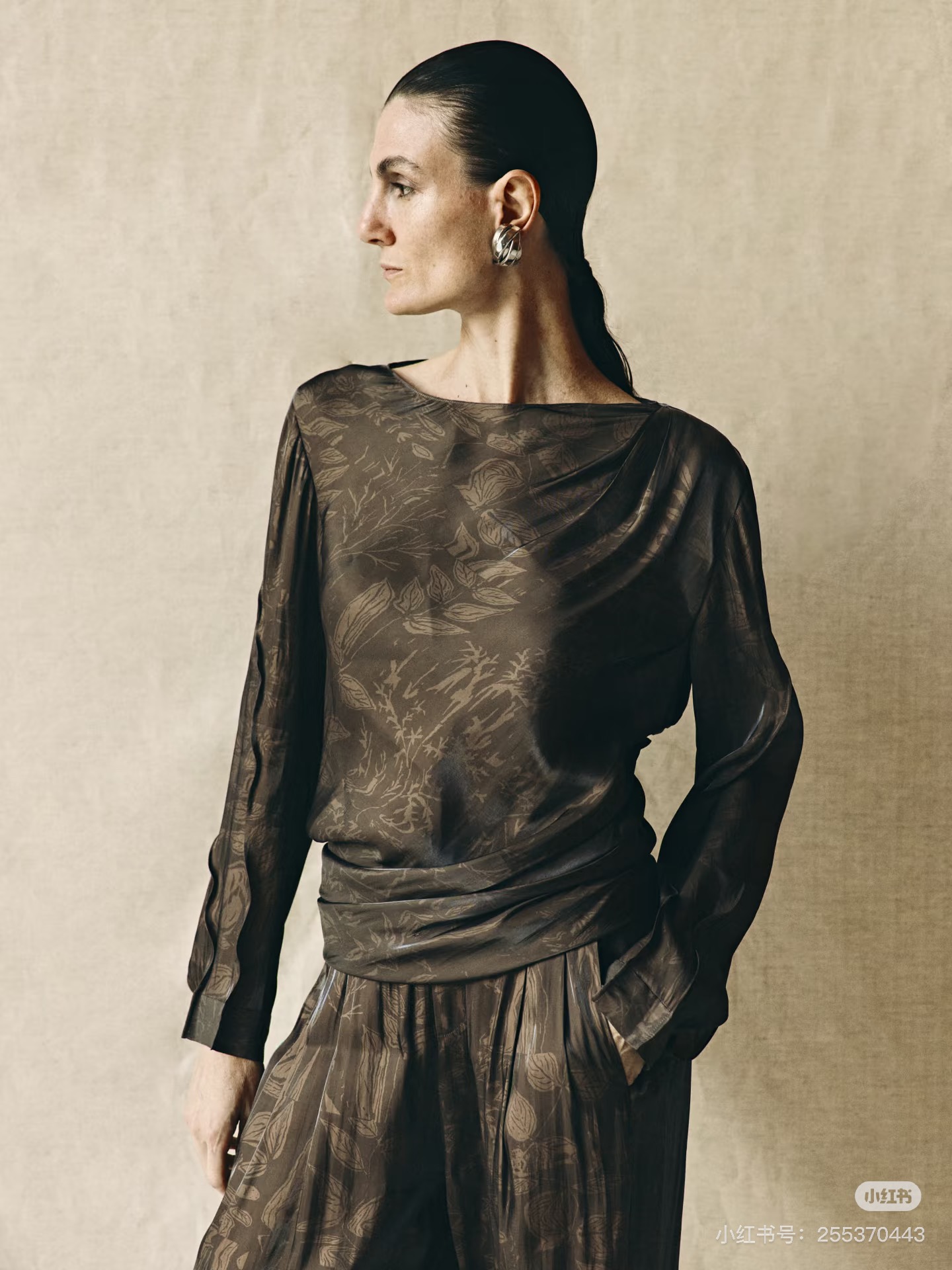
One example is deepmoss, founded by designer LIU Xiaolu. Her signature "Aqua" fabric has evolved into hundreds of variations since 2016, forming the basis of the label's sub-line Aura. Liu told Jiemian News that the studio now co-develops new materials with suppliers across knitwear, denim, and wool—often before any orders are placed. "It's about mutual growth," she said.
According to Lin Jian, China's textile industry has entered its "3.0 stage," defined by the integration of material and design. "It's no longer enough to show fabrics," he said. "You need to let them be seen, felt, and understood."
For most suppliers, however, mass-brand partnerships remain the financial backbone that funds such creative exploration. As Zhong of Prosperity Textile put it: "We in textiles care who made the fabric—but 99% of consumers don't. Building a fabric brand is a long game."
